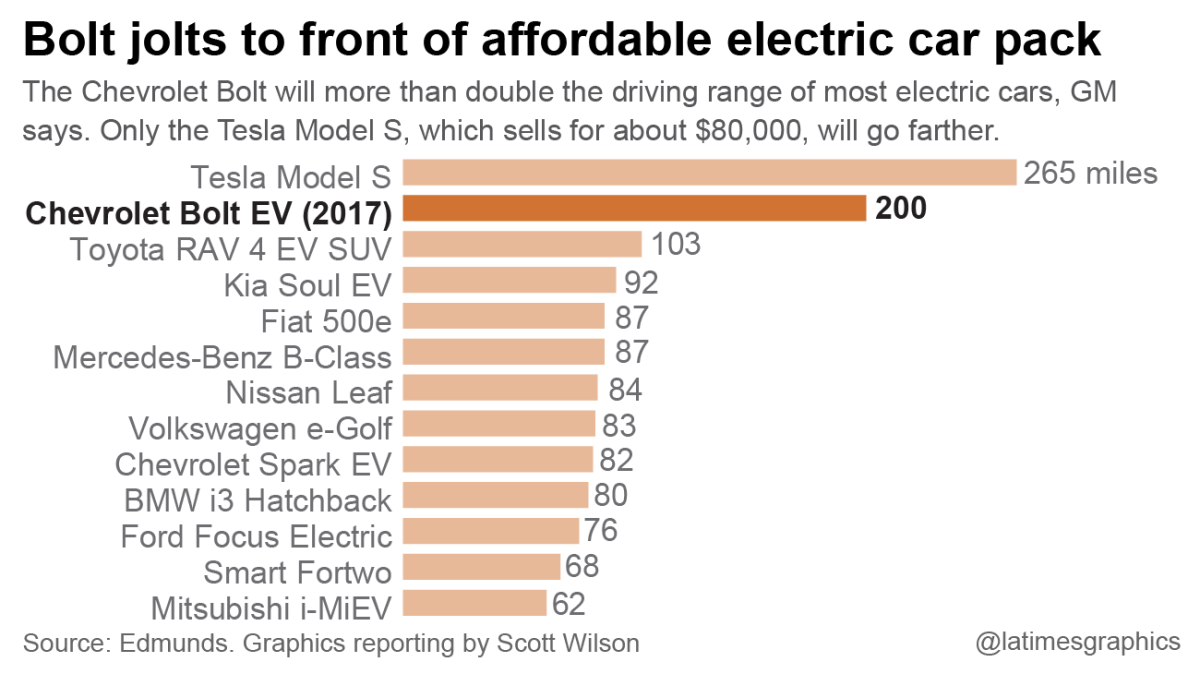Tesla Q&A: What you need to know about ‘range anxiety’ and more

- Share via
Elon Musk is chief executive of Tesla Motors, builder of the world’s foremost luxury electric automobile. The Silicon Valley-based technology whiz, who also owns the cutting edge private rocket company Space X and is currently building the world’s largest battery factory, has planned a Thursday morning news conference at which he promises to put an end to “range anxiety.”
What is range anxiety?
Electric automobiles, as distinct from so-called hybrid electric cars, get their propulsion from power stored in an on-board battery. “Range anxiety” describes the driver’s fear of running out of stored energy before he can get to a location that offers recharging.
How far can electric cars go?
Electric vehicle, or EV, range varies considerably. At the high end, Tesla’s Model S sedans can go in excess of 265 miles before running out of electricity. Less expensive EVs made by Nissan, Mercedes, Volkswagen, Kia, Fiat, Chevrolet, BMW and Toyota have ranges of 80 to 100 miles.
How long does it take to recharge them?
EV batteries are recharged using electric plugs. The electricity is delivered slowly via old-fashioned 110v home wall plugs or quickly using fast chargers like Tesla’s “supercharger” stations. A small-battery EV like a Ford Focus can charge to 100% power, using a home 240v plug, in about four hours.
A high-powered Tesla Model S, using one of the company’s superchargers, can regain 80% of its power in as little as 30 minutes. Tesla has installed superchargers up and down California, making inter-city travel a breeze. Most cities, however, do not have superchargers in significant numbers – in Los Angeles County, they are in Culver City, Hawthorne and Manhattan Beach – leaving most commuters to charge their vehicles more slowly at home.
But these EVs are expensive, right?
Electric versions of gas-powered cars tend to cost considerably more than their petroleum-based cousins. A Chevy Spark starts as low as $12,000; the Spark EV starts at $26,820. A Fiat 500 starts at about $17,000; the Fiat 500e starts at $32,300. Tesla’s Model S sedans, which do not have gasoline counterparts, begin at $71,000.
Why can't automakers build EVs that go farther?
They can, and they will. Tesla’s most expensive Model S can go as far as 295 miles between charges. Improvements to the power package on its discontinued Roadster have extended that car’s range to more than 350 miles. Chevy has recently announced an upcoming EV, probably called the Bolt, and probably on roads by 2017, that will have a range of 200 miles. Ford is rumored to be working on an equivalent-range EV too.

What's Musk going to announce?
Tesla has been improving its range since it put the first Roadster on the road in 2008. It’s likely that Thursday’s news conference will unveil a new software update that will extend the range of the Model S by improving the rate at which the vehicle re-captures electricity while braking, or battery mapping changes that will make it easier to charge the battery to 100% in less time.




